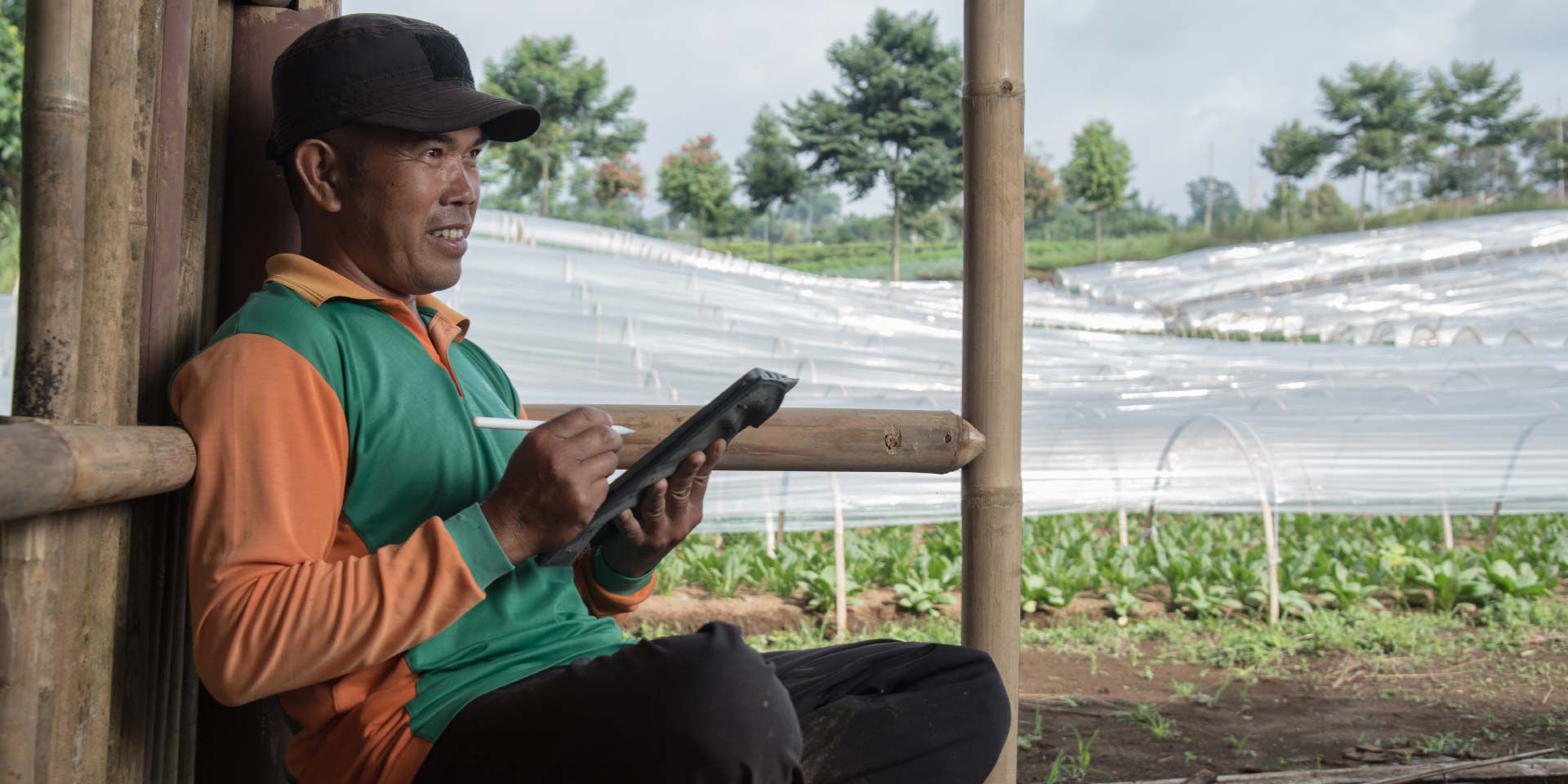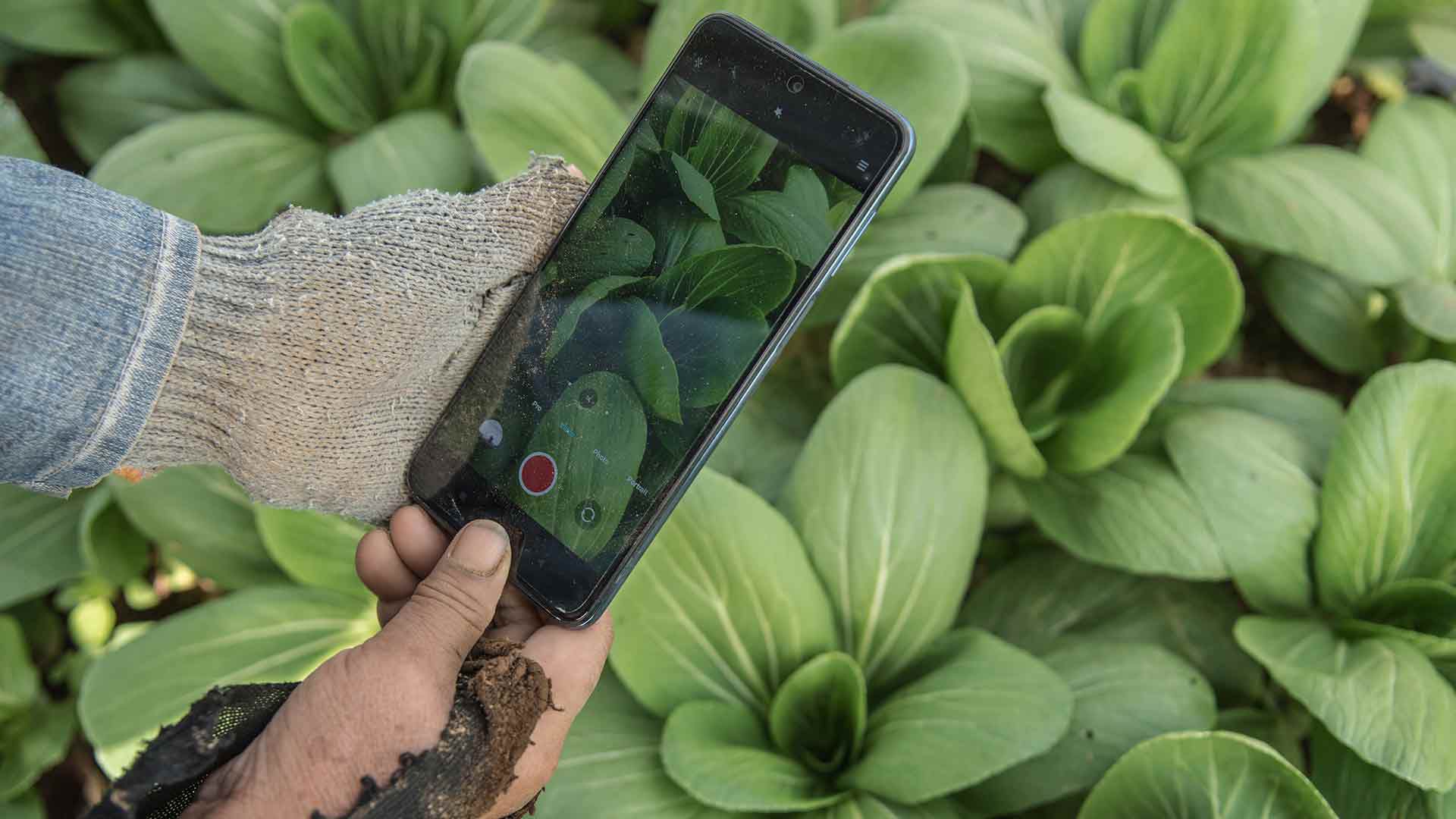By Karlis Salna and Nara Pernama
Mount Gede, West Java, Indonesia — On the slopes of Mount Gede, an active volcano on Indonesia’s main island of Java, farmer Wawan Sudrajat sits on a bamboo platform amid a patchwork of fields brimming with vegetables. Volcanic deposits have enriched the soil here with magnesium and potassium, making it extremely fertile.
Yet, it’s never been as productive as it is now as Sudrajat and many more farmers like him increasingly turn to digital tools to grow their business.
Like his father and generations of his family that came before, farming is in Sudrajat’s blood. While like them his back often aches at the end of a long day in the fields, there are some stark contrasts. Instead of hauling what he grows down to the village to sell, the traditional market has been replaced by a smartphone. With one swipe, he has instant access to a host of data which helps him plan his next crops, and he has greater access to Indonesia’s booming grocery market, estimated to be worth US$120 billion.
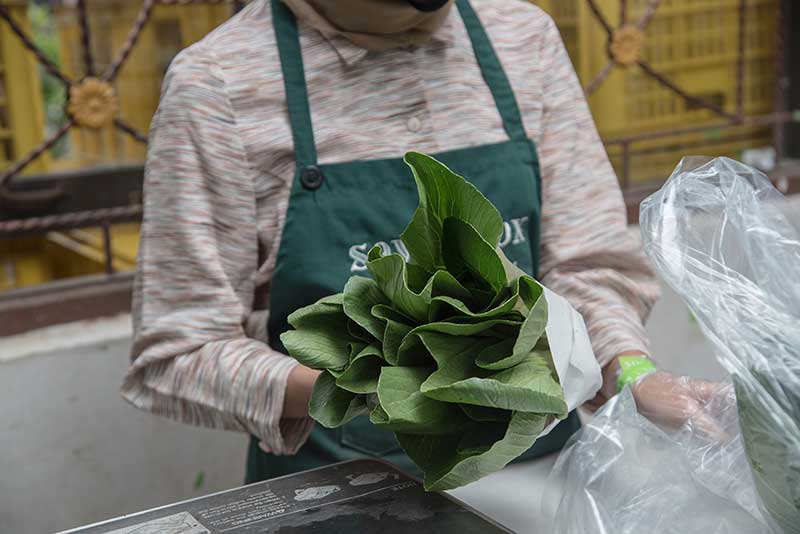
Sayurbox vegetable sorting hub in West Java, Indonesia. The start-up is helping to solve supply chain challenges for farmers. Photo by: Eka Nickmatulhuda/IFC
The 52-year-old is an example of how the disruptive power of the internet is empowering people and boosting their incomes along the way.
At the same time, tastes have changed in Indonesia as a growing middle class armed with greater purchasing power than ever has spurred demand for a greater variety of fruit and vegetables. Here, on the slopes of Mount Gede, tea plantations have given way to rows of kale, black corn, and a Japanese variety of spinach, along with other vegetables you might more commonly find in salads sold in the hipster cafes of Los Angeles.
The kale earns Sudrajat about 15,000 rupiah (about US$1) per kilogram. That’s much better than the cabbage he used to grow. It might not seem like much, but Sudrajat said that for him, it’s been life changing. “I didn’t even know what kale was a few years ago,” he said. “I make three times more money than I did before.”
It’s not just what is grown that has changed. How food gets from farm to plate is being transformed by technology too. Sudrajat is one of 33 million farmers in Indonesia that rely on e-commerce and companies like Sayurbox, a farm-to-plate start-up which connects him directly to an online customer base.
Some of what he produces on the small patch of land he leases from the government — about 1,200 square meters — is destined for tables in upmarket restaurants in the Indonesian capital Jakarta, some 50 miles away. The rest will be bought by Indonesians who increasingly demand organic produce and prefer to do their shopping online, a trend that has surged amid the COVID-19 pandemic.
Indonesia is a country rich in natural resources with a growing middle class. But for all its progress, Southeast Asia’s biggest economy is also home to a yawning rich-poor divide with almost 10 percent of the population — about 26 million people — living in poverty.
Like many economies, it has been rocked by the pandemic. But just like it did in the wake of the 1997 Asian financial crisis and the global financial crisis just over a decade ago, Indonesia is proving once again that it has the capacity to rapidly bounce back.
The economy grew 5.4 percent in the second quarter of 2022.
Farmers like Sudrajat are benefiting from the resilience of the Indonesian economy, as well as the fact that the country boasts the region’s fastest growing grocery market.
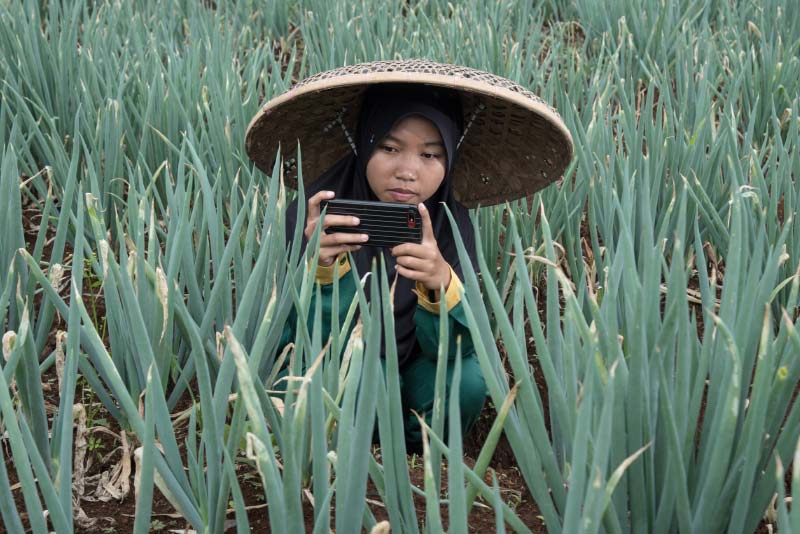
Sayurbox works with more than 10,000 farmers in Indonesia and is seeking to boost that to 40,000 by 2024. Photo by: Eka Nickmatulhuda
In March 2022, IFC invested $10 million in Sayurbox, funds that will enable it to scale up its digital platform and dramatically boost direct farm-to-plate access nationwide. Sayurbox currently serves one million customers on the islands of Java and Bali. While the platform already works with more than 10,000 farmers, it's seeking to boost that to 40,000 by 2024. Its platform offers more than 5,000 products, from fresh produce, meat and poultry, to snacks and ready-to-eat dishes.
"Scaling up digital platforms such as Sayurbox can make a huge contribution toward unlocking access to markets and finance and to raising living standards for millions of farmers through increased cashflows and support for small and medium-sized enterprises," said Azam Khan, IFC Country Manager for Indonesia and Timor-Leste. "Digitalization is a key pillar of our strategy and crucial to supporting the economy in a post-COVID-19 business environment."
A report by the consulting firm McKinsey makes clear that faster adoption of modern technology among micro and small businesses is key to fully unleashing the Indonesian economy. Digital technology and its connection with agriculture—which accounts for about 13 percent of the country’s GDP and almost a third of jobs—is also crucial to Indonesia’s post-COVID recovery, the report said.
The report estimated that accelerating the adoption of modern agricultural technologies could generate up to US$6.6 billion a year in additional economic output from improved yields and reduced costs.
For Sudrajat and other farmers, the smartphone has become a digital silo of information that has translated into improved productivity and higher incomes.
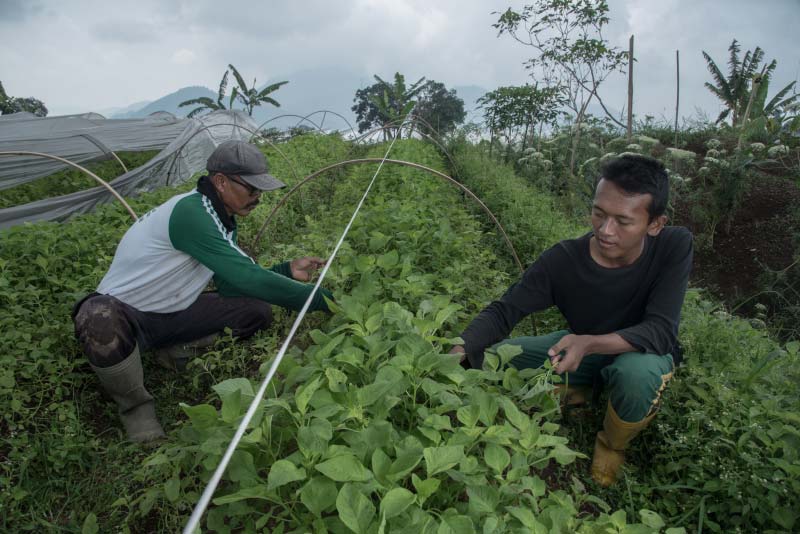
Farmers, Soleh (L) and Cecep (R), harvest spinach at the farm in Cipanas, West Java, Indonesia. Photo by: Eka Nickmatulhuda/IFC
In the past, farmers had limited bargaining power when selling their harvest. “When I sold in the village, often there were not enough customers, so I was forced to use middlemen or see my crop go to waste,” Sudrajat said. “The middleman would not give a fair price. Often, I would barely break even and sometimes I would even lose money. It made me sad, angry. Farming can be very hard work and I worried a lot about making enough money for my family.”
“It’s much better now,” Sudrajat said.
Published in September 2022
